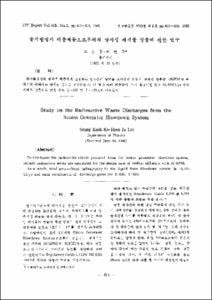신자유주의 연구
- Abstract
- There are two 'new Liberalisms,' 'Neo-Liberalism' and 'New Liberalism' translated into a Korean Language, 'Shinjayoujuyi'. This paper aims to show the difference of Neo-Liberalism from New Liberalism and to give each of them proper name logically and historically.
New Liberalism is an ideology whose main doctrine laid emphasis on the need of 'state intervention' in order to solve 'the social problem' caused by 'laissez-faire.' It substituted for 'Classical Liberalism' in the late 19th century in Great Britain. It was not a sort of socialism but 'reformed' liberalism. The Great Depression in 1929 forced governments to practice the interventionist liberal doctrine established about 30 years before. It was shaped up as 'welfare state' throughout the western Europe and North America after world war Ⅱ.
The main tenet of Neo-Liberalism is "an unregulated market is the best way to increase economic growth, which will ultimately benefit everyone." In other words, Neo-Liberalists emphasized laissez-faire as the most efficient means to solve the crisis of capitalist world economy due to Interventionism and welfare state.
They thought it is the 'revival of economic liberalism' retired by Interventionism. Namely, for them Neo-Liberalism is revived Liberalism. The men who accepted 'Neo-Liberalism' as a term in fact agreed to such a view. In., this case they, intentionally or not, appear to have to exclude Interventionism or the idea of welfare state from the category of Liberalism. We found that it was Interventionist Liberalism. I conclude that New Liberalism is truly 'new' liberalism and Neo-Liberalism had better be renamed as 'the return to Old Liberalism' not 'the revival of Liberalism.'
There are two 'new Liberalisms,' 'Neo-Liberalism' and 'New Liberalism' translated into a Korean Language, 'Shinjayoujuyi'. This paper aims to show the difference of Neo-Liberalism from New Liberalism and to give each of them proper name logically and historically.
New Liberalism is an ideology whose main doctrine laid emphasis on the need of 'state intervention' in order to solve 'the social problem' caused by 'laissez-faire.' It substituted for 'Classical Liberalism' in the late 19th century in Great Britain. It was not a sort of socialism but 'reformed' liberalism. The Great Depression in 1929 forced governments to practice the interventionist liberal doctrine established about 30 years before. It was shaped up as 'welfare state' throughout the western Europe and North America after world war Ⅱ.
The main tenet of Neo-Liberalism is "an unregulated market is the best way to increase economic growth, which will ultimately benefit everyone." In other words, Neo-Liberalists emphasized laissez-faire as the most efficient means to solve the crisis of capitalist world economy due to Interventionism and welfare state.
They thought it is the 'revival of economic liberalism' retired by Interventionism. Namely, for them Neo-Liberalism is revived Liberalism. The men who accepted 'Neo-Liberalism' as a term in fact agreed to such a view. In., this case they, intentionally or not, appear to have to exclude Interventionism or the idea of welfare state from the category of Liberalism. We found that it was Interventionist Liberalism. I conclude that New Liberalism is truly 'new' liberalism and Neo-Liberalism had better be renamed as 'the return to Old Liberalism' not 'the revival of Liberalism.'
- Issued Date
- 2002
- Type
- Research Laboratory
- Publisher
- 人文論叢
- Language
- kor
- Rights
- 울산대학교 저작물은 저작권에 의해 보호받습니다.
- Citation Volume
- 21
- Citation Start Page
- 27
- Citation End Page
- 53
- Appears in Collections:
- Research Laboratory > Journal of humanities
- 파일 목록
-
-
Download
 000002024813.pdf
기타 데이터 / 308.18 kB / Adobe PDF
000002024813.pdf
기타 데이터 / 308.18 kB / Adobe PDF
-
Items in Repository are protected by copyright, with all rights reserved, unless otherwise indicated.